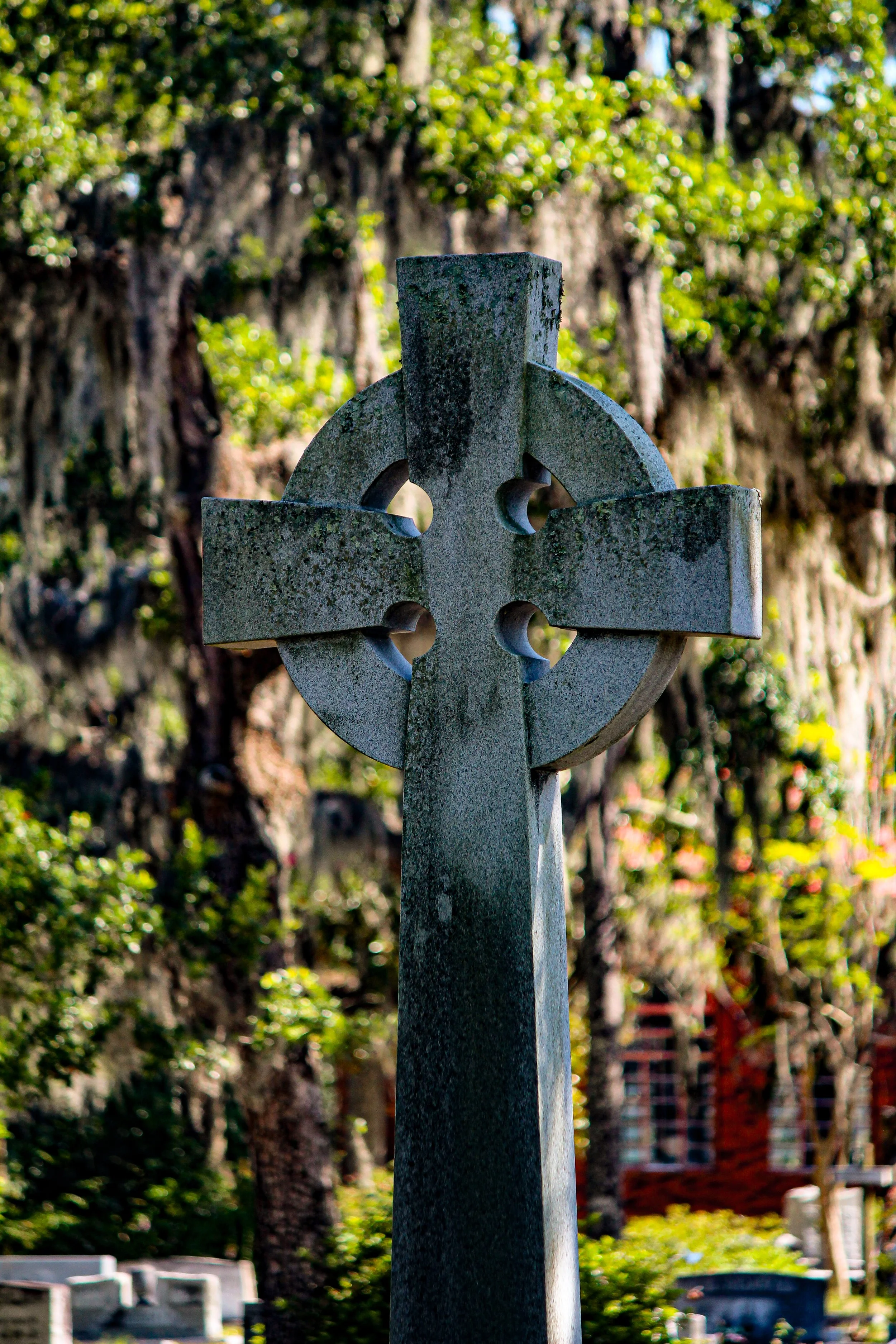Savannah with a side of grit(s): Intro to Bonaventure Cemetery - The Timeline
Mid 1800’s postcard of the main gate of Bonaventure Cemetery
Nestled among moss-draped oaks on the bluffs overlooking the Wilmington River, Bonaventure Cemetery isn’t just a burial ground—it’s a living archive of Savannah’s layered, complicated past. Tourists are drawn in by its haunting beauty and at this point, the historical context it brings not only to the area, but the overall Southern Gothic culture. Locals know it as sacred ground. But behind the wrought iron fences and winding dirt paths lies a timeline that traces Savannah’s journey from colonial settlement to romantic Southern gothic icon.
This is your deep dive into Bonaventure’s origins, transformations, and legacy—a timeline introduction to a place where marble angels meet memory, myth, and mourning. Rest assured, there will be a mini-series dedicated to Bonaventure. Trust me, it deserves it.
1753–1762
The land that would become Bonaventure Cemetery began as a plantation estate. In 1753, Colonel John Mullryne, a wealthy British Loyalist, purchased the property and named it Bonaventure, meaning “good fortune” in Italian. He and his son-in-law, Josiah Tattnall, would establish Bonaventure Plantation, cultivating rice and possibly indigo on the site using enslaved African labor. Unfortunately, little is known about the ins and outs of the Plantation and the enslaved who were forced into labor there. Some historians view it as more of a private estate that would have had enough enslaved souls to run the household operations, while others believe it was a middle-of-the-road between estate and a full-blown working plantation.
In 1771, the original Bonaventure house burned to the ground. Local legend says this happened during a dinner party—one of many dramatic episodes in the land’s long history. A second mansion was built nearby, and the plantation remained in the Tattnall family until the early where the eldest son, Josiah Tattnall II lived with his wife Harriett and their children until Tattnall II and his wife died in the early 1800s.
1776–1782
When the American Revolution broke out, Mullryne and Tattnall sided with the British. This decision would cost them everything.
Both men were banished from Georgia after the war, and their property, including Bonaventure, was confiscated by the state. The land changed hands several times afterward, a reflection of the turmoil and shifting allegiances of post-Revolutionary Georgia.
1846
In 1846, the plantation was sold to Peter Wiltberger, a prominent Savannah hotelier, who transformed it from private farmland into an exclusive, private cemetery. He opened it as Evergreen Cemetery, following the “rural cemetery movement” that was sweeping the U.S.—a style popularized by places like Mount Auburn Cemetery in Massachusetts. A big draw of the rural cemetery was to help in the mitigation of disease. In the 17th century, with a rise in population and disease, but no medical advancements to help, many residents feared the spread of disease via corpses. Moving the dead out of town helped to calm the fear, and as a byproduct, the introduction of beautiful garden-style cemeteries was born.
These cemeteries were meant to be park-like, romantic, and reflective. This was a sharp contrast to the crumbling, overcrowded urban graveyards of the time.
1861–1865
The Civil War left its ghostly mark on Bonaventure. Savannah fell to Union troops in December 1864 during Sherman’s March to the Sea. To be clear, Sherman did not burn the city down (another post for another day) but we did surrender and default to Sherman’s rule during his tenure in the Hostess city. Though Bonaventure saw no battles, many Confederate soldiers were buried there, and the war deepened the cemetery’s function as a place of regional identity and collective mourning. A visit today will show you veteran after veteran who fought for the Confederacy. It’s rich with civil war history.
By this time in the history of the cemetery, Peter Wiltberger’s son had taken over operations and was expanding the grounds. While he operated relentlessly, he was searching for a buyer for his father’s legacy.
1907
In 1907, the City of Savannah purchased Evergreen Cemetery from Evergreen Cemetery Co. for $30,000 and renamed it Bonaventure Cemetery, restoring its original name and tying it more explicitly to the city’s colonial heritage. City ownership brought more infrastructure: defined plots, improved roads, official landscaping. But it also preserved much of the overgrown romanticism that gives Bonaventure its now-iconic atmosphere.
Mid–20th Century
Celtric Cross, Bonaventure Cemetery 2025. Photo by Ashley Canelon
By the 1950s and 60s, Bonaventure was still active as a cemetery, but its national profile was quiet. The grounds were hauntingly beautiful, but also semi-forgotten—visited mostly by locals, families of the interred, and a few curious historians. Much of Savannah was in the same state at this time, with history falling to progress and residents who were in search of a more streamlined, modernized city. The lack of attention on the cemetery arguably gives us what we see today; it’s remained fairly well preserved in its older sections, saving it from overdevelopment, even as Savannah’s suburbs expanded.
1994–1997
Everything changed in the 1990s with the publication of John Berendt’s bestseller Midnight in the Garden of Good and Evil. The book, and later the film adaptation, featured Bonaventure prominently, particularly the now-famous “Bird Girl” statue (which has since been relocated to the Telfair Museums). The story of how that came to be may be a blog for another time, because it's actually very much so random and quite interesting.Suddenly, Bonaventure was on the map. Amplified by the release of the movie and Bonaventure serving as one of the filming locations tourists poured in. Photographers captured its moss-draped statuary for magazines and coffee table books. Bonaventure became not just a place to mourn, but a place to marvel. The beauty in this is that when the Victorians were meticulously designing their beautiful garden plots for the community to enjoy and spend time around, it came full circle with worldwide attention and visitation.
Today
Today, Bonaventure is an active cemetery. It’s sold out, and has been for many years, but you will still find regular funerals (and mourners). It’s also becoming a cultural hub as visitors to the city come out for guided tours and for a leg stretch after a long journey to Savannah. The grounds are home to over 160 acres of history, art, and Southern identity. Visitors come to see famous graves (like songwriter Johnny Mercer and poet Conrad Aiken), admire the Victorian funerary symbolism, and reflect beneath hundred-year-old live oaks.
But beneath the beauty lies a complicated story: of plantations and slavery, of lost wars and reinvention, of civic pride and personal grief.
Here’s the best part— I’m out there, a lot. If you are interested in a tour of the cemetery, send me a note. I’d love to show you around our beautiful little peaceful piece of paradise.



